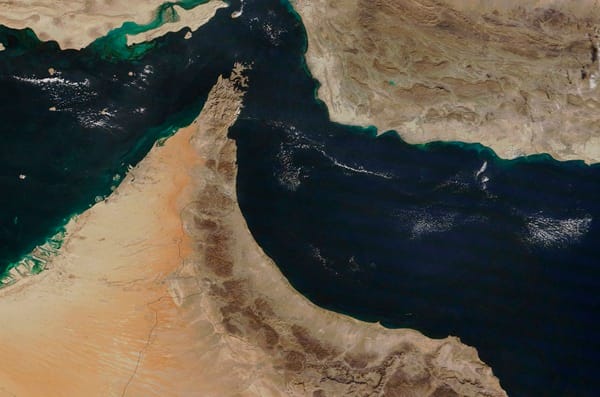Escalating military exchanges between Iran and Israel have spurred growing unease among shipping and energy markets over the potential closure of the Strait of Hormuz—an international chokepoint through which roughly 20% of the world’s oil flows daily.
According to reputable sources, the Combined Maritime Forces, a coalition including U.S., U.K., and Saudi units, have shifted to “war footing” in response to recent Israeli strikes on Iran’s nuclear and military targets.
Following the death of key Iranian commanders, Tehran vowed “bitter, painful” revenge and reportedly launched over 100 missiles and drones toward Israel over the weekend.
While no shipping disruption has occurred yet, we are cautious that a full Strait closure, though still an unlikely scenario remains possible if the conflict deepens.
Market jitters are palpable. After President Trump urged Iranians to “immediately evacuate Tehran,” crude oil futures tumbled amid fears of broader escalation—especially a potential blockade of the Strait. Shipping fixtures have already begun slowing, although vessel volumes remain largely steady for now.
Breaking news – oil tanker collision
On Tuesday morning, at 00:15 GMT, we saw the collision of two oil tankers in the UAE’s Persian Gulf. The collision between the Adalynn and Front Eagle does not seem to be “security related” according to maritime security monitor, Ambrey. However an analysis by Pole Star seems to hint toward a potential AIS jamming scenario.
The Combined Maritime Force’s JMIC information centre said in an advisory this week that it had received reports of electronic interference originating from the vicinity of Iran’s Port of Bandar Abbas. You’ll notice in the surveillance image from Pole Star below, that this incident occurred near the Port of Bandar Abbas.
What could trigger a closure?
Escalation by proxy or direct attacks: If Iranian proxies target suspect merchant traffic—especially vessels flagged as U.S. or Israeli—or if Iran deploys asymmetric warfare (e.g., mines or anti-ship missiles), maritime disruption could quickly follow.
Blockade via military or semi-official force: A deliberate closing of the Strait would constitute a significant escalation—likely invoking regional and Western powers into a direct naval confrontation. Such a move would have major geo-political consequences and trigger a major escalation. Though highly unlikely, this move would certainly alienate the Iranian regime from major trade partners and allies that rely on oil and gas from the Persian Gulf.
Collateral disruptions: Even absent a full blockade, growing jamming of AIS signals near Iranian ports (already reported over Bandar Abbas) raises navigation risks, and ongoing attacks on oil infrastructure could force ship detours or increased insurance surcharges.
Wider iprple effects
Insurance and routing costs: Shipping firms are already facing rising war-risk premiums. Even a hint of Strait disruption could significantly inflate global freight rates.
Oil prices: Markets have reacted swiftly—Brent and WTI saw sharp intraday swings following President Trump’s evacuation call. A serious closure would likely send oil prices into spikes, compounding inflationary pressures globally.
Geopolitical escalation: A closure would almost certainly draw in U.S. and Gulf-state naval forces. The current force posturing suggests preparations for rapid escalation if Iran acts against maritime traffic.
Domestic turmoil in Tehran
President Trump’s abrupt G7 exit and social‑media call for evacuation of Tehran have contributed to panic inside Iran. Videos and satellite‑linked footage depict massive traffic gridlock as residents attempt to flee. Trump warned: “Iran cannot have a nuclear weapon” and clarified he’s not pursuing a cease‑fire, saying, “I want a real end”.
Though no official U.S. military strikes have been announced, the warning led to growing international panic—mass evacuation, banking outages, and speculation around imminent attacks.
Conclusion
While a complete closure of the Strait of Hormuz remains unlikely at present, the shifting rules of engagement—marked by direct strikes, AIS jamming, and war‑mode maritime coordination—have heightened risk. The coming days and weeks are pivotal. If traffic trends continue downward and on‑the‑water incidents increase, insurers and shippers must prepare for fast‑escalating scenarios. While the Strait remains open for now, Pole Star’s real-time vessel tracking and maritime risk intelligence are helping shipping and energy firms stay ahead of unfolding risks.

